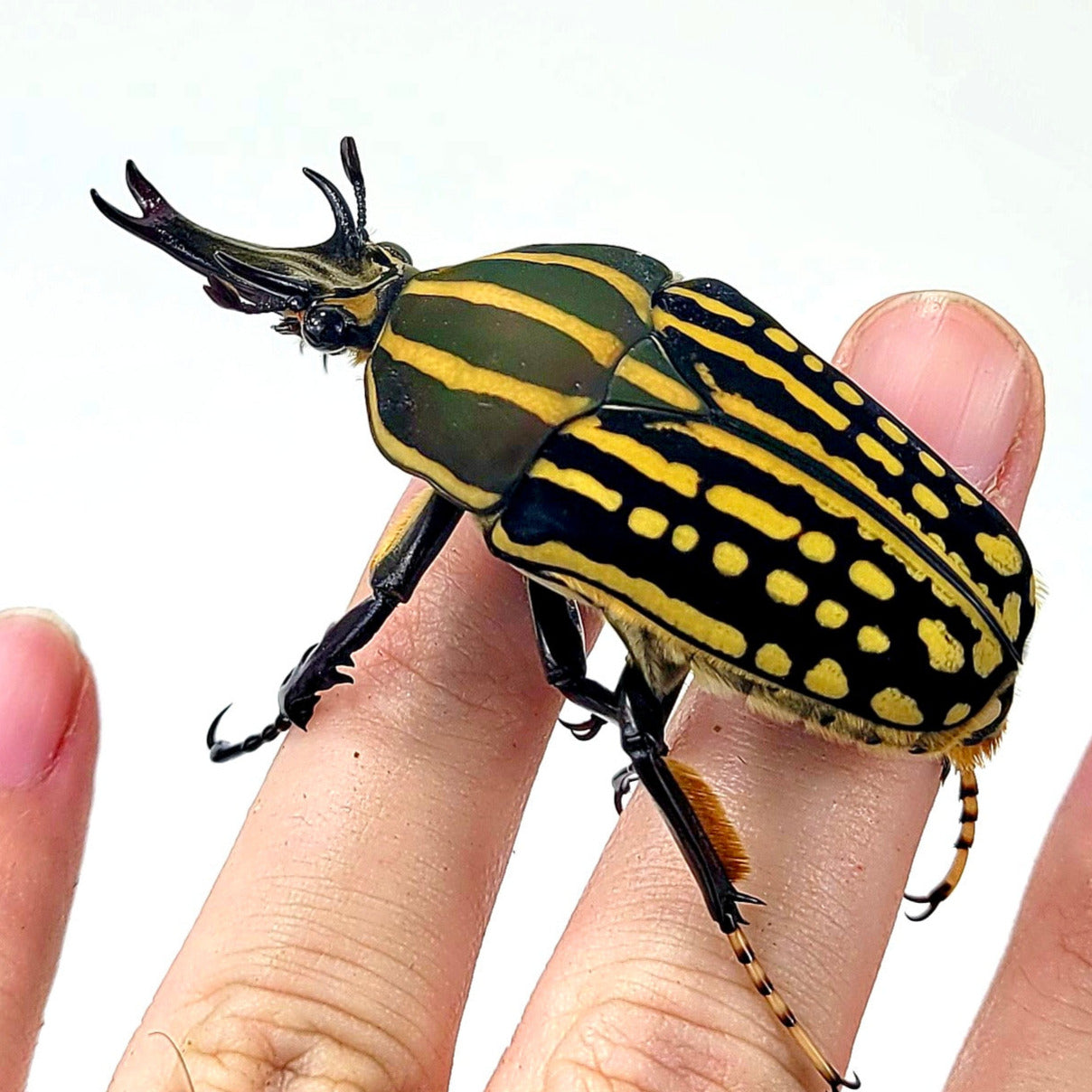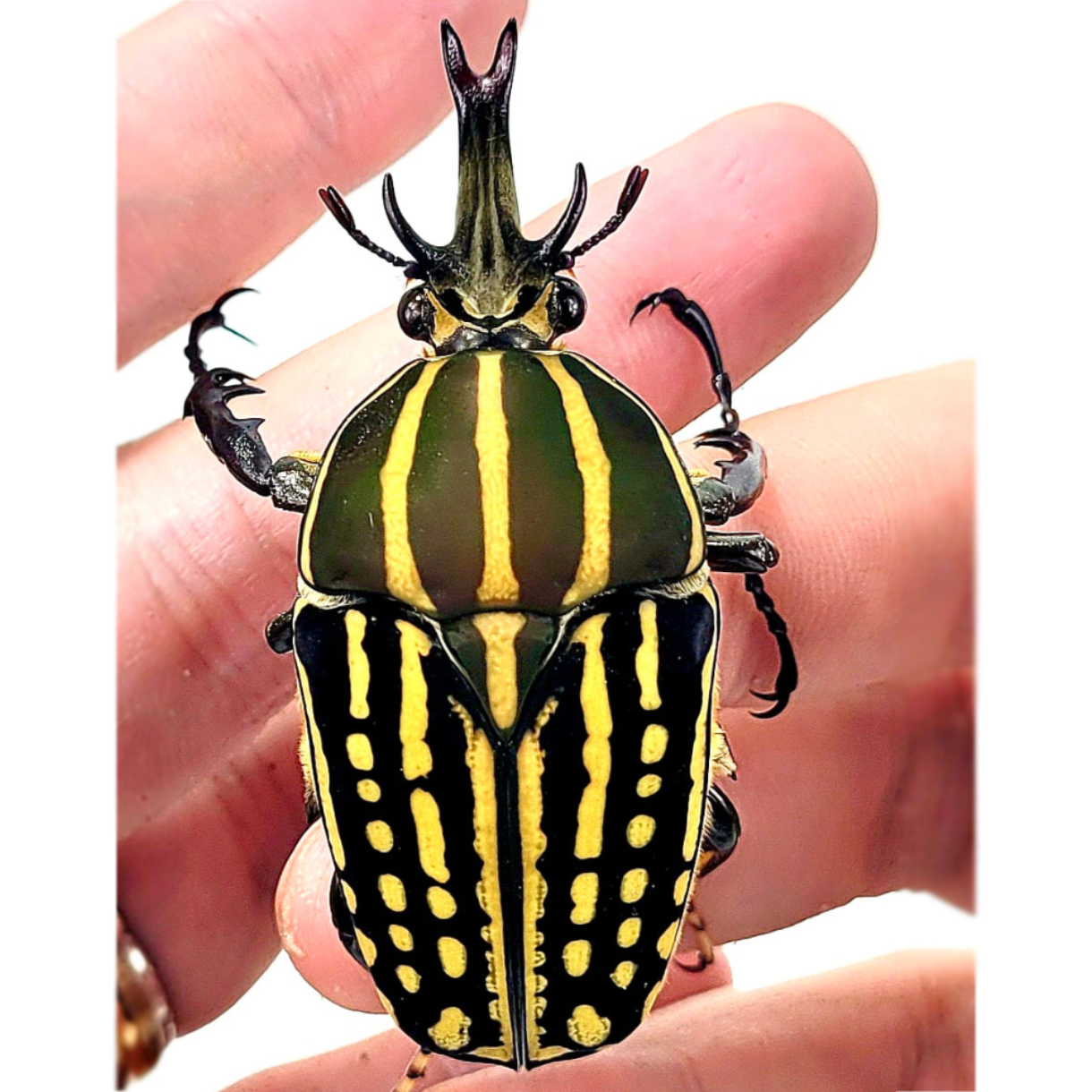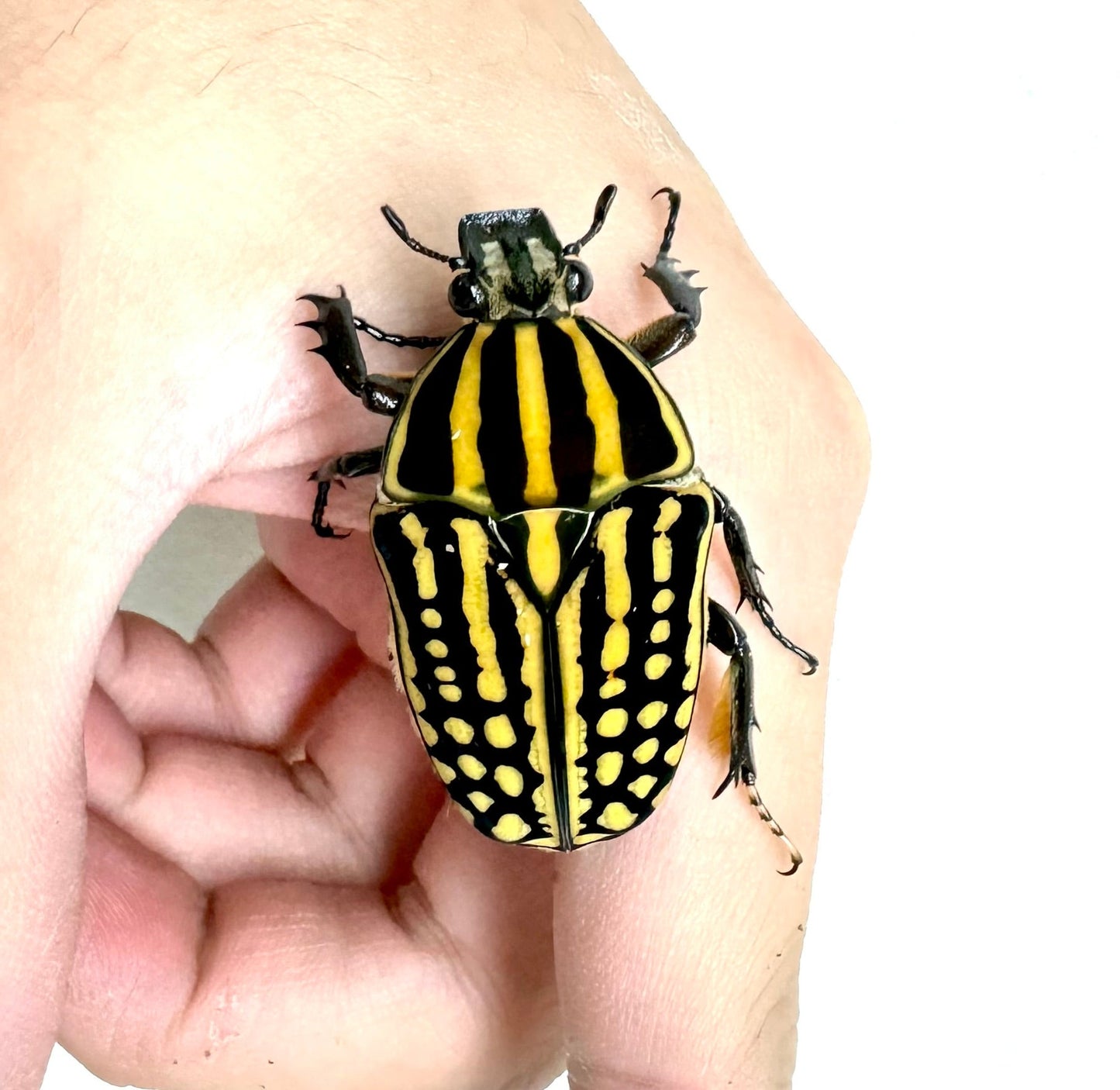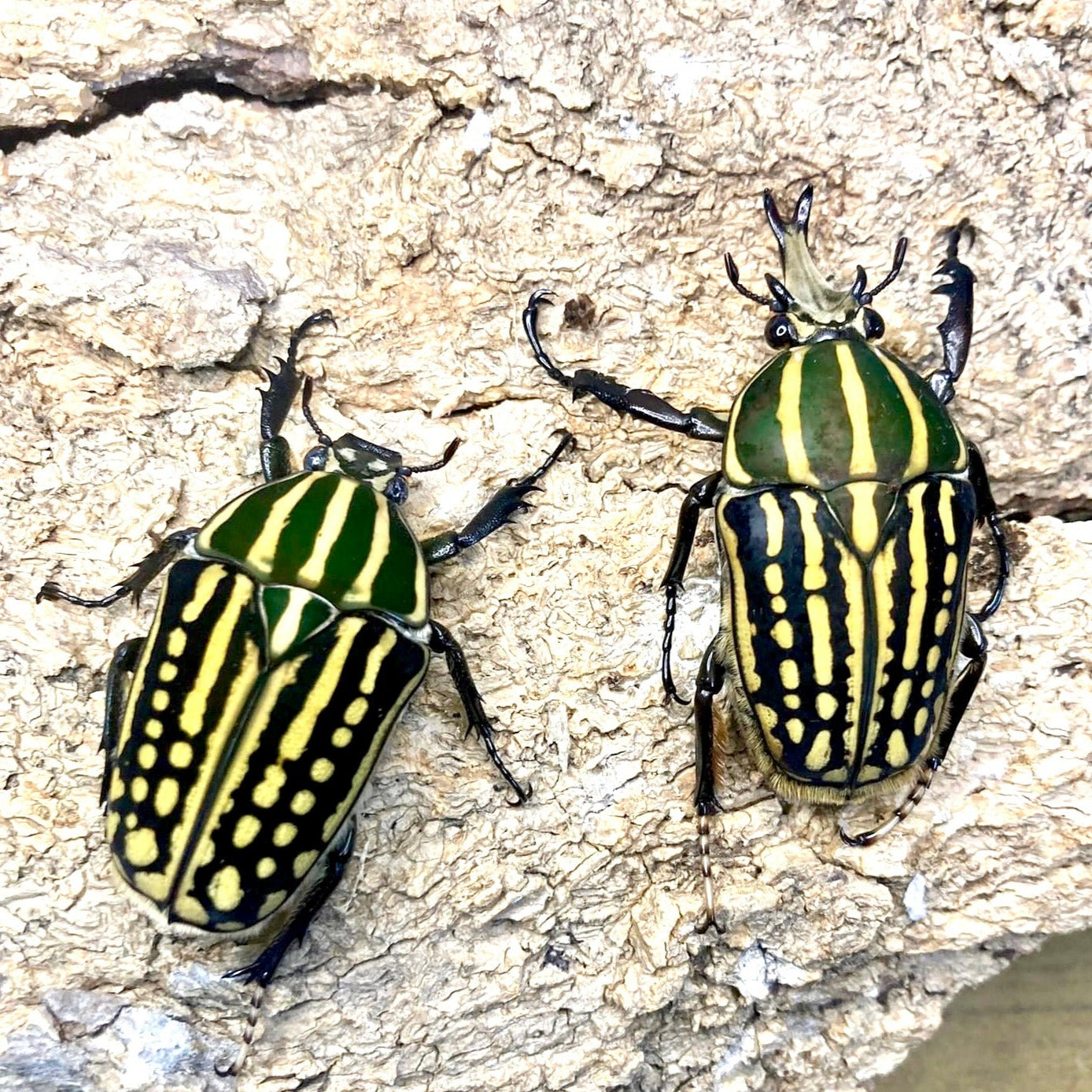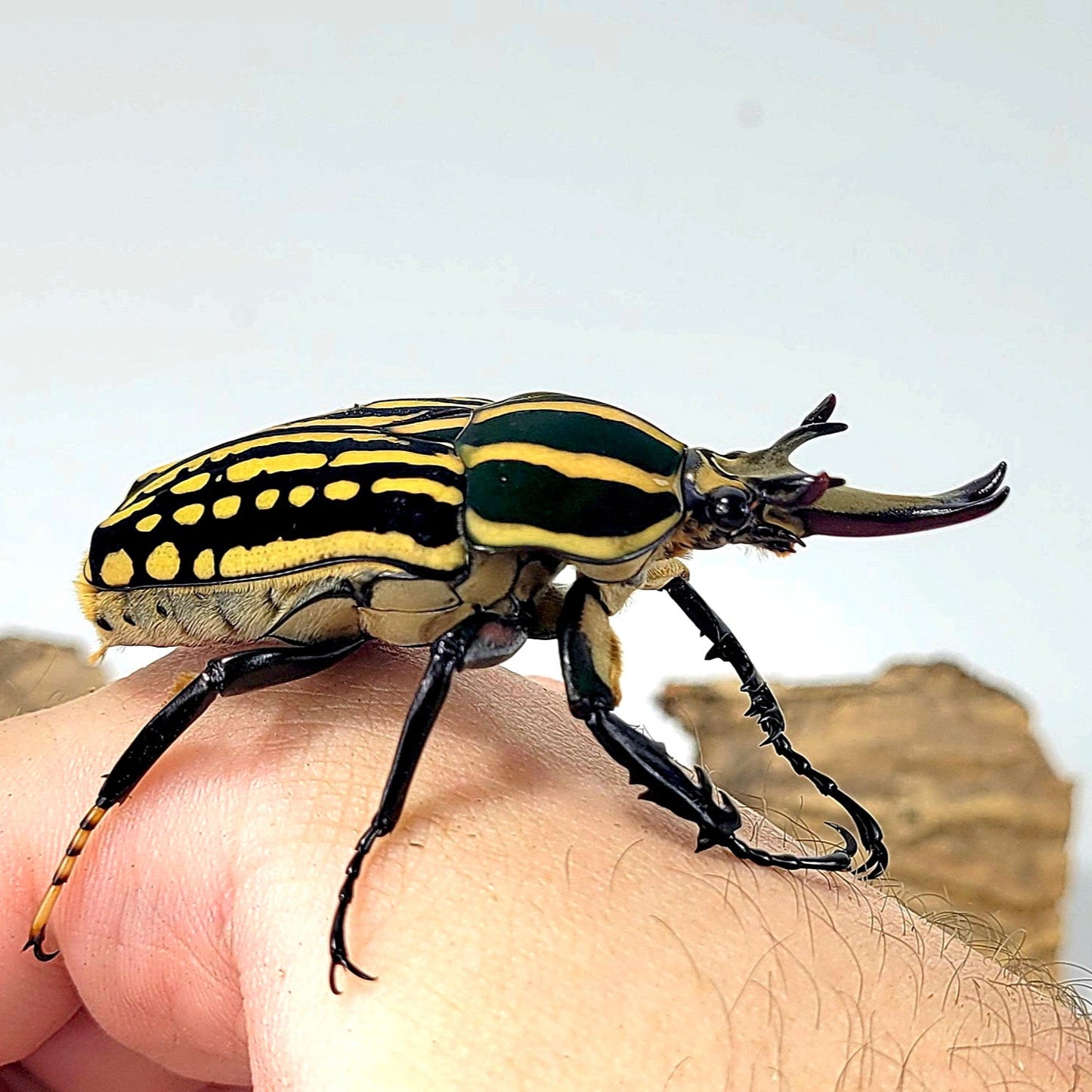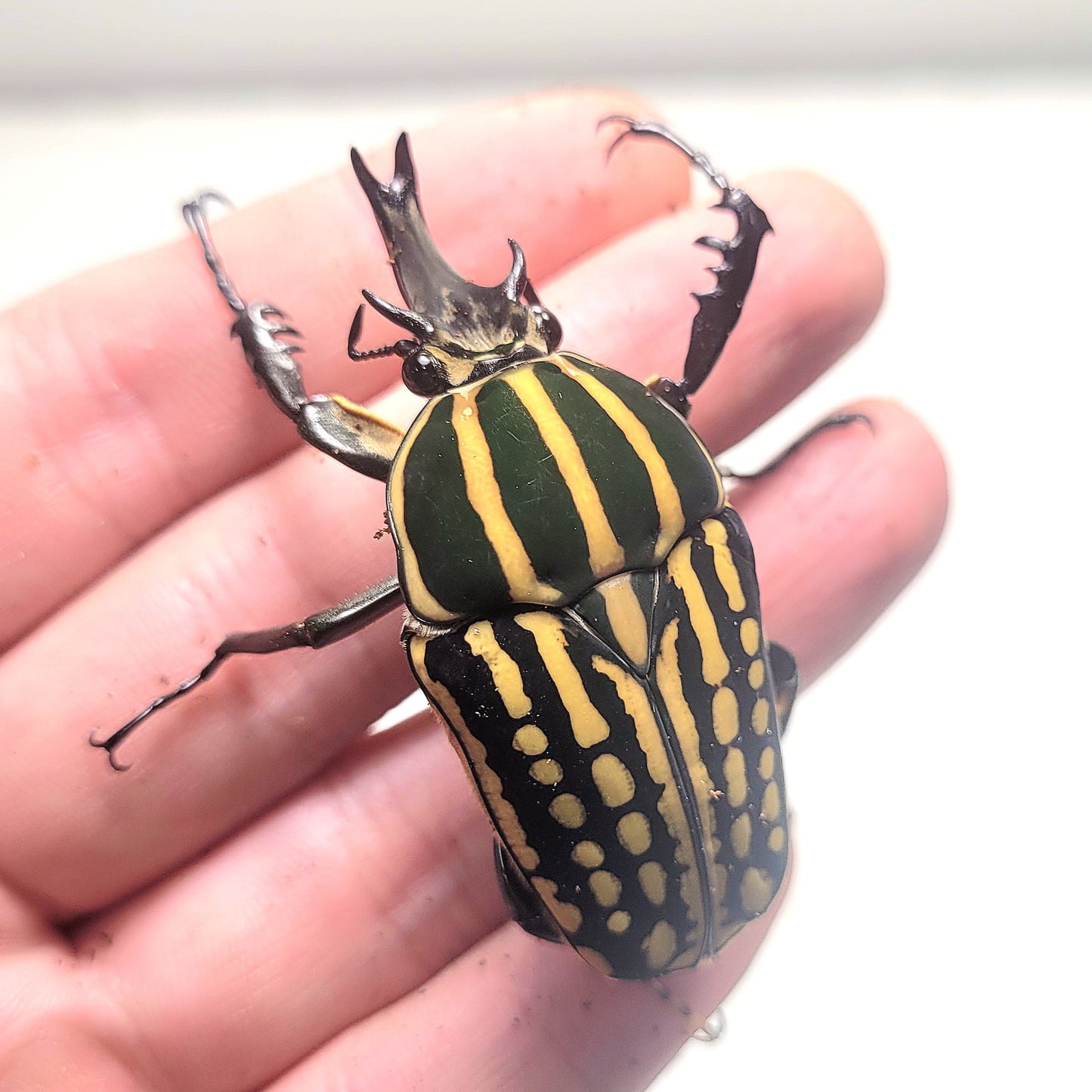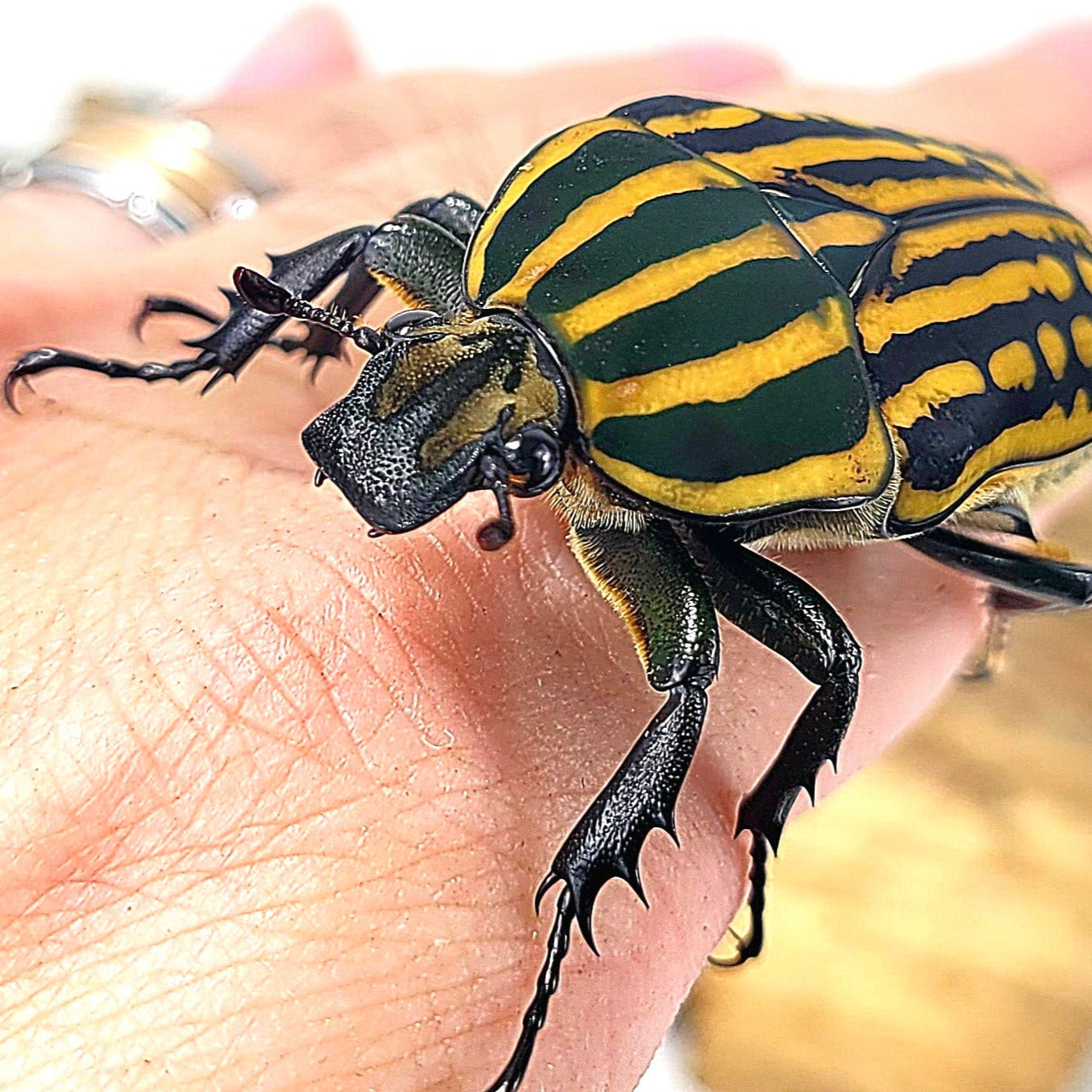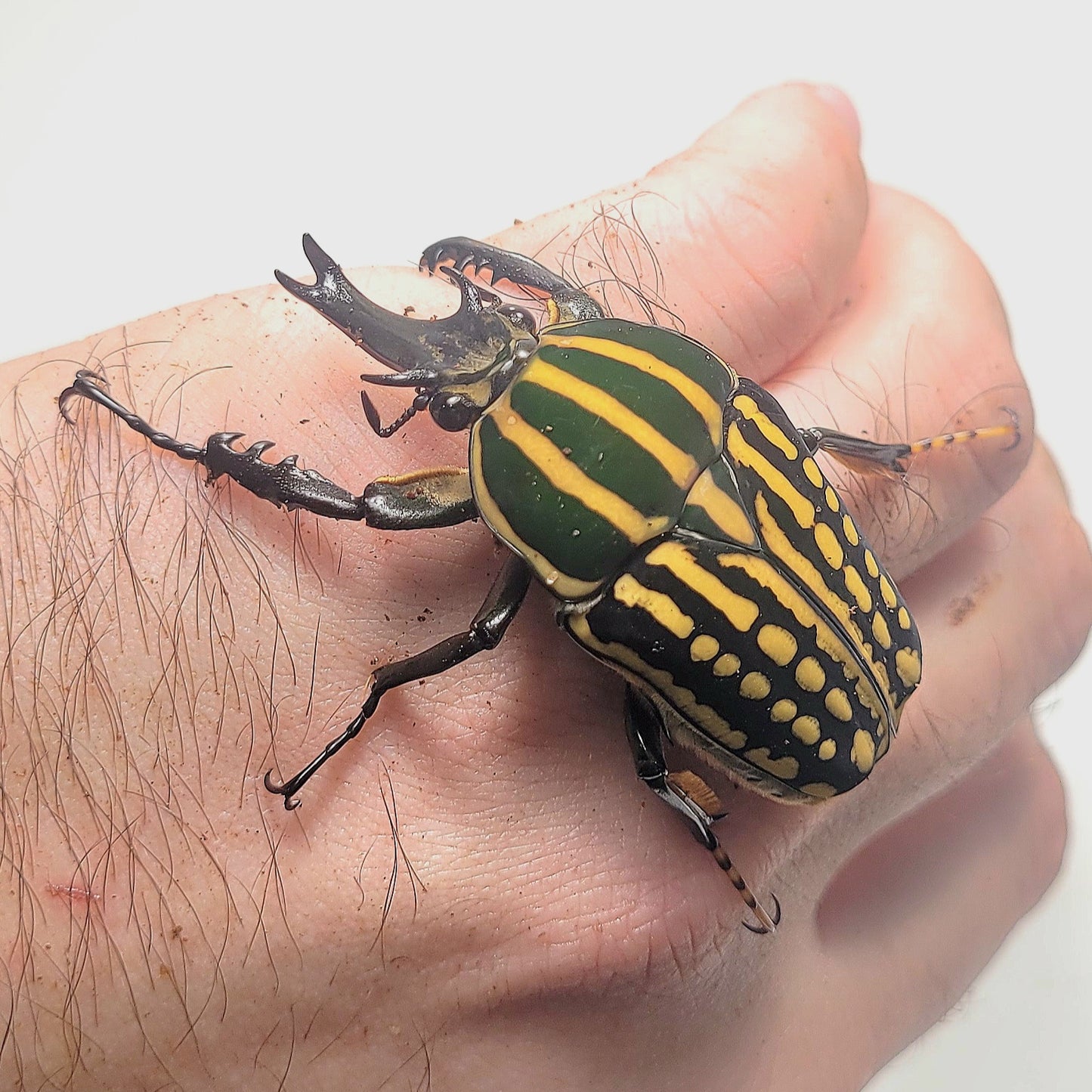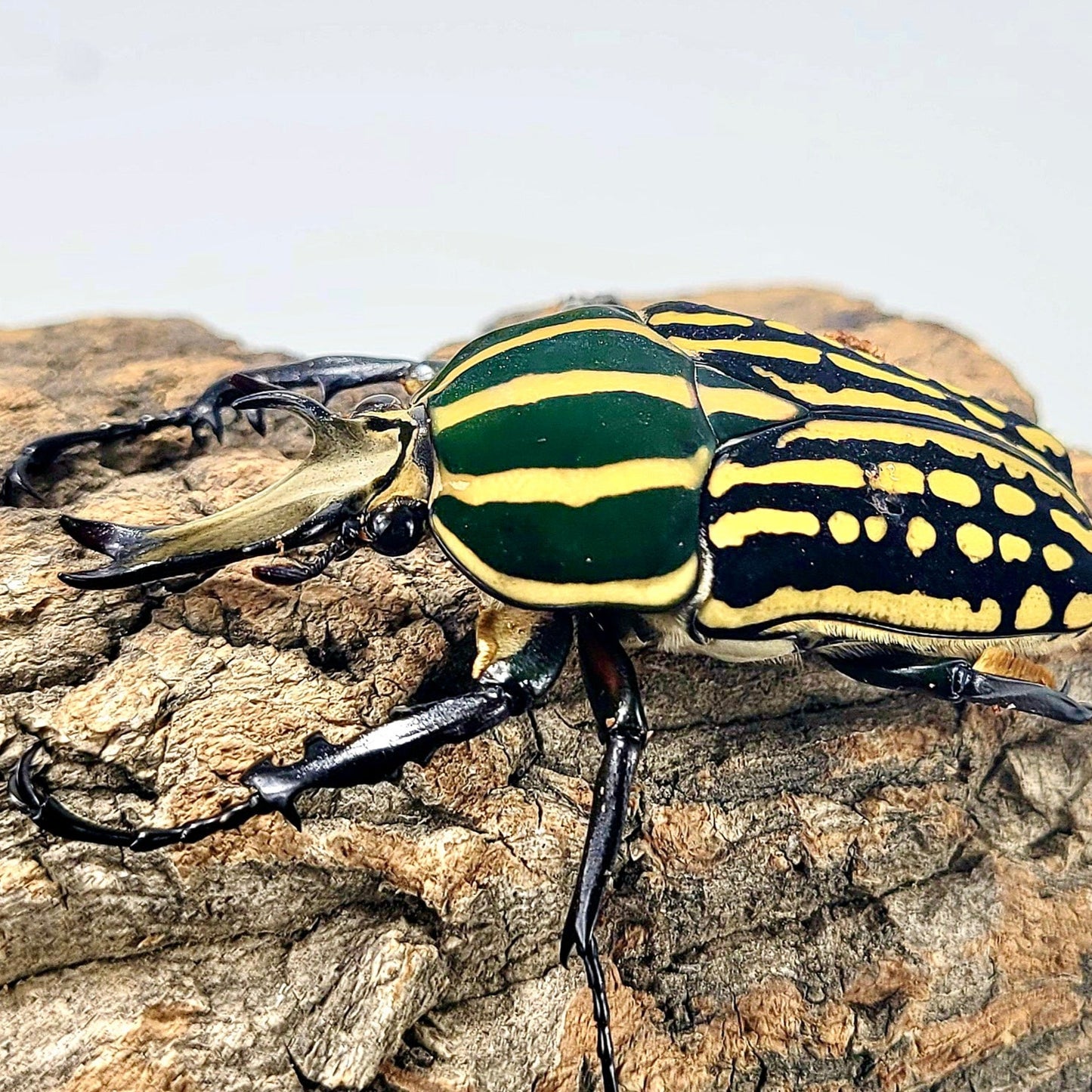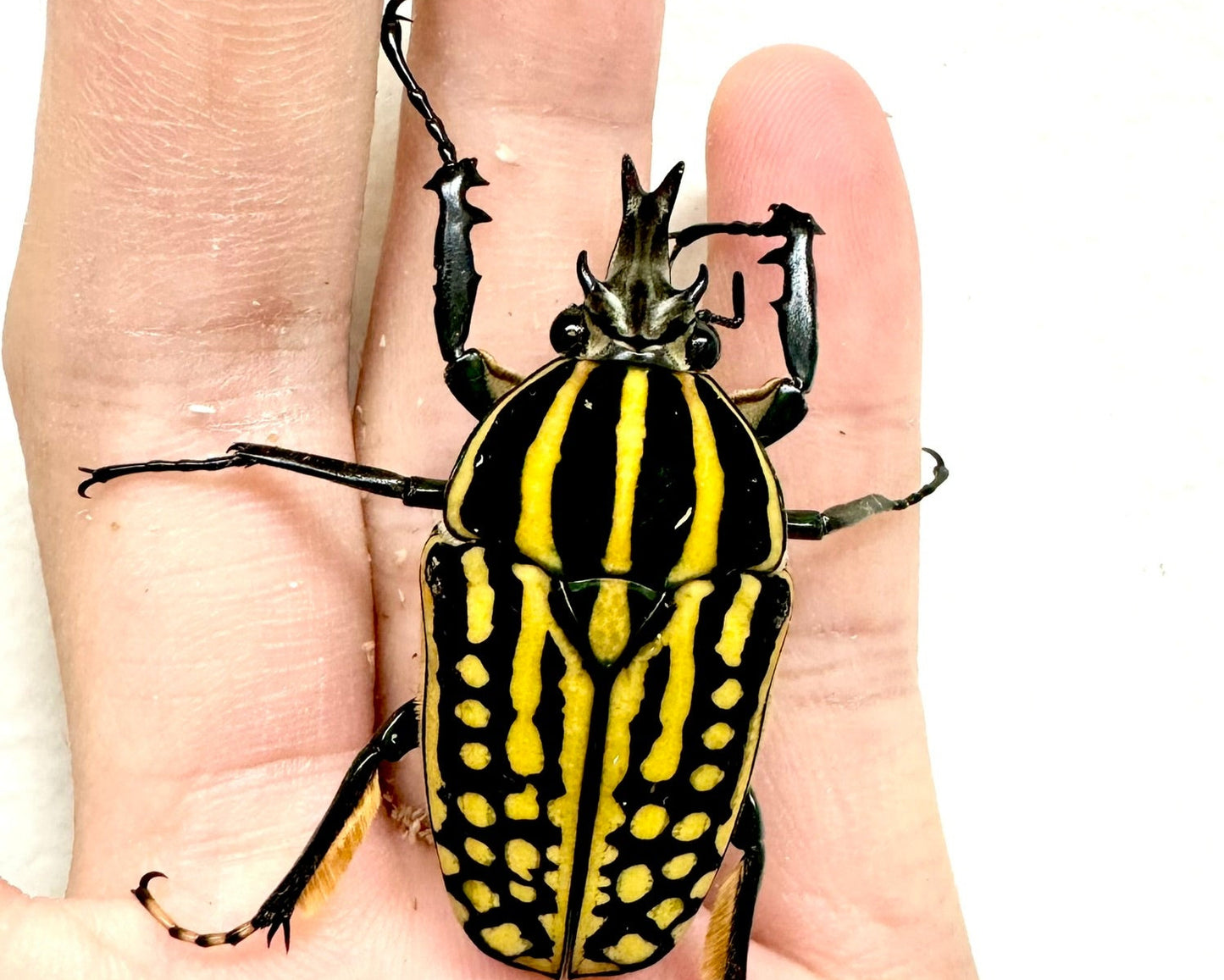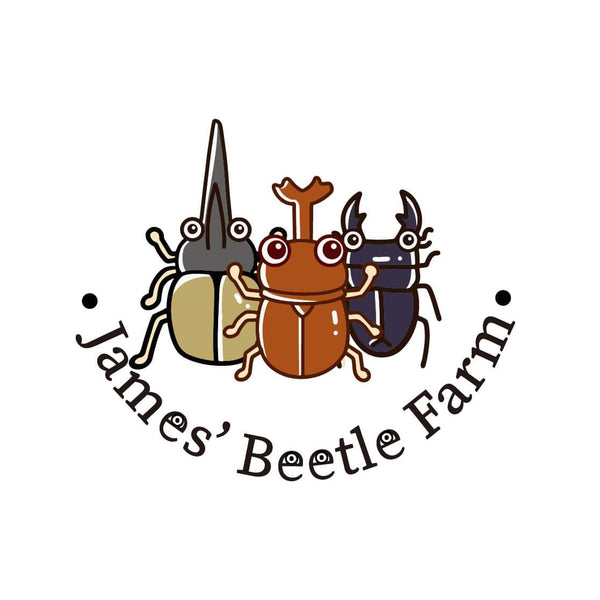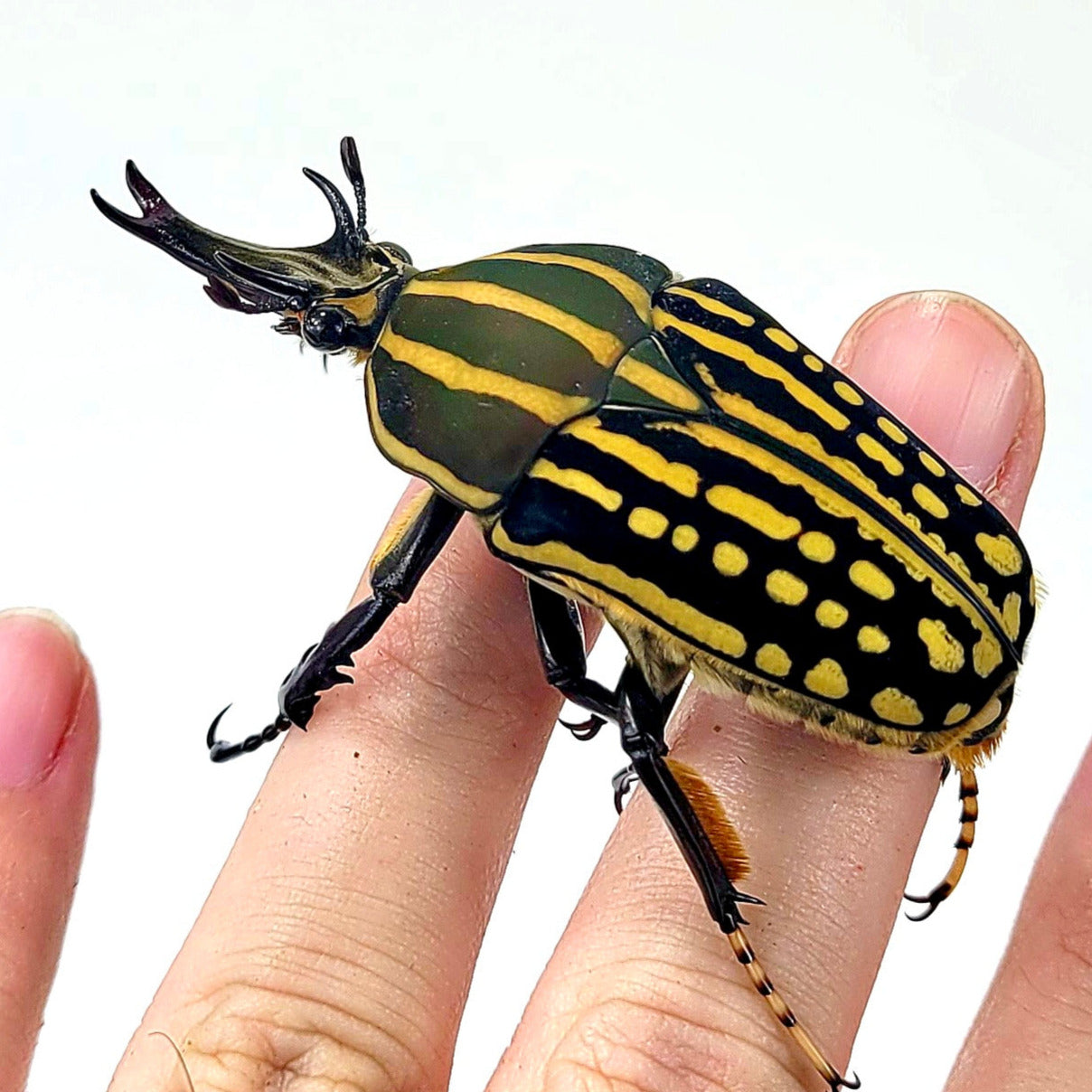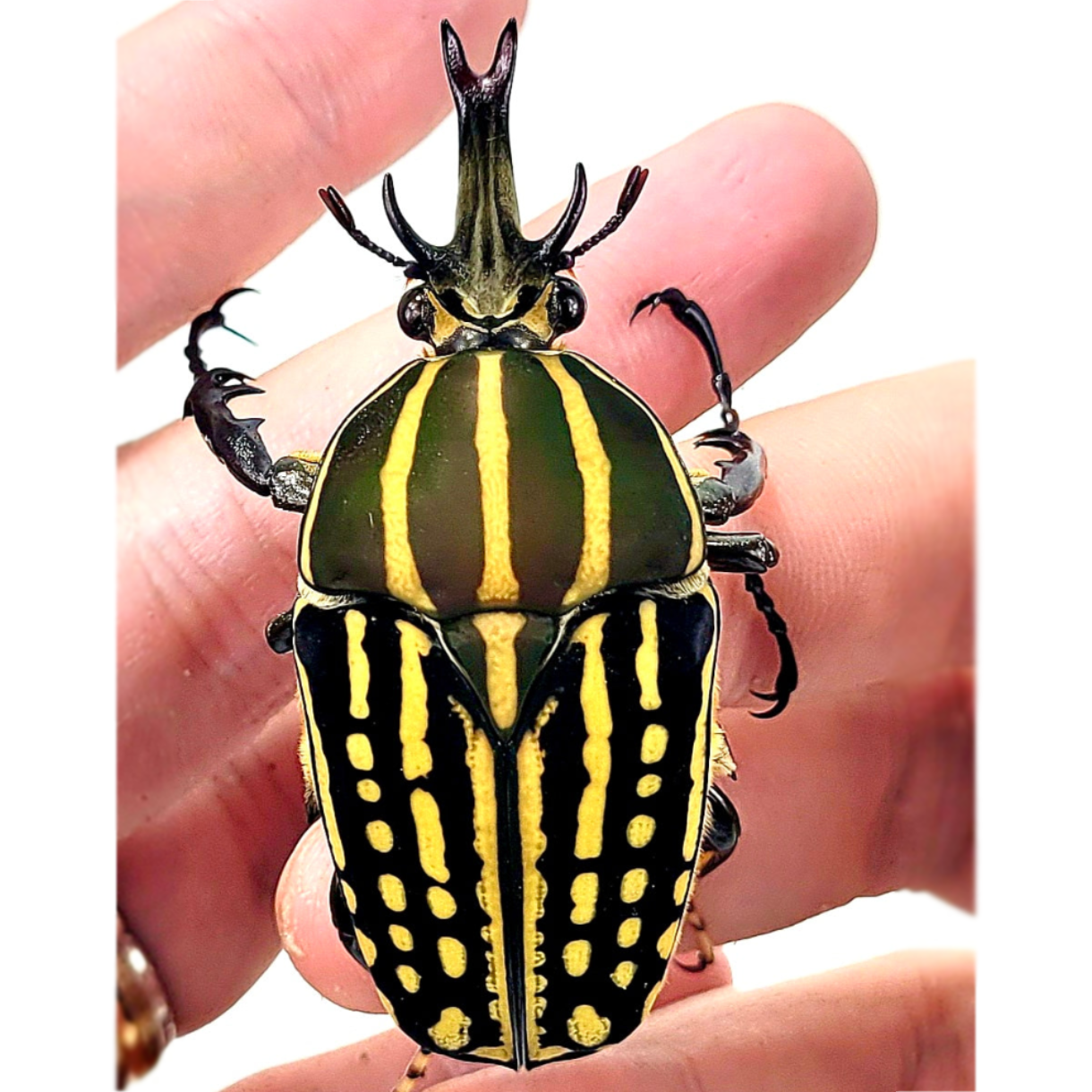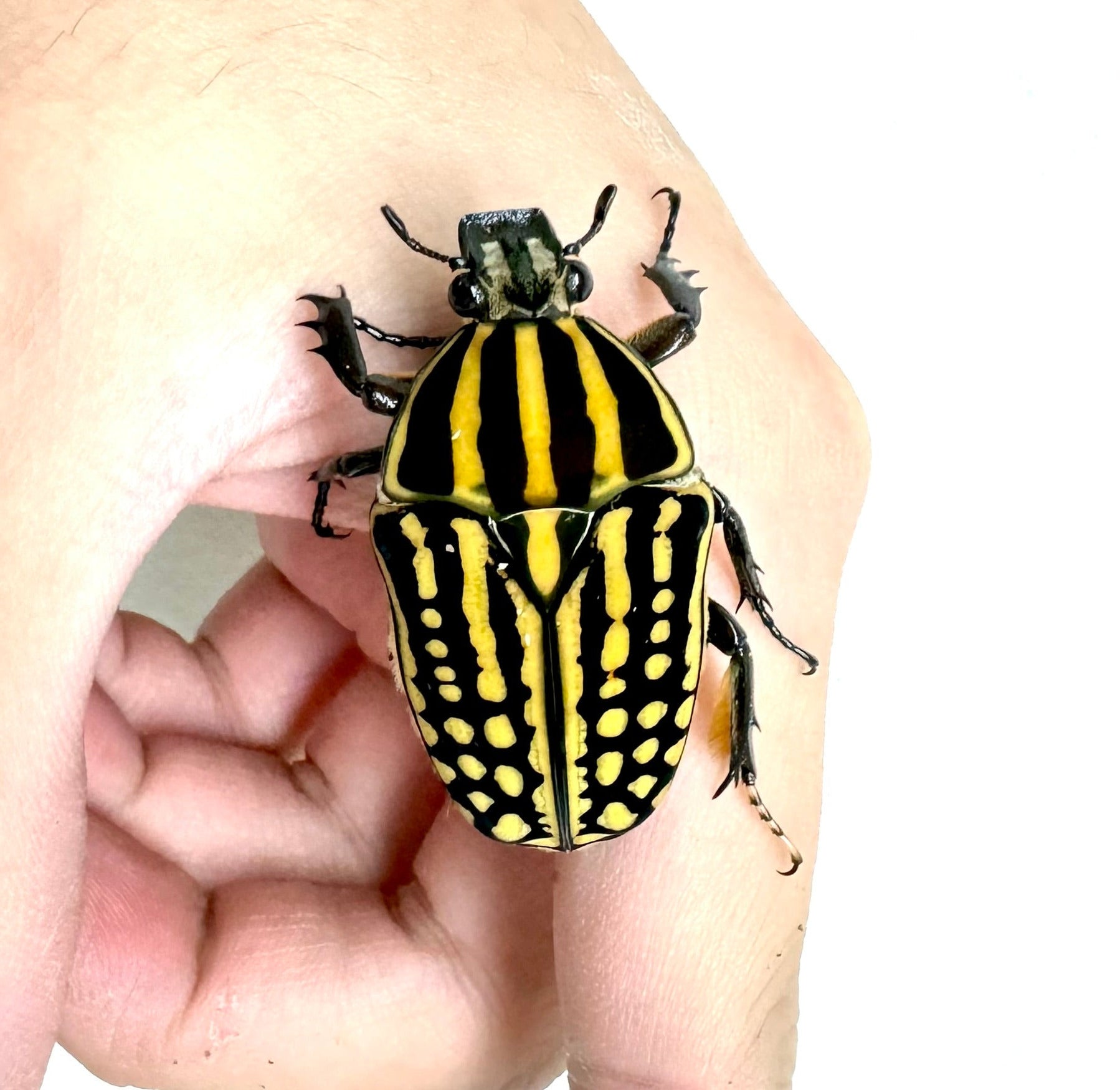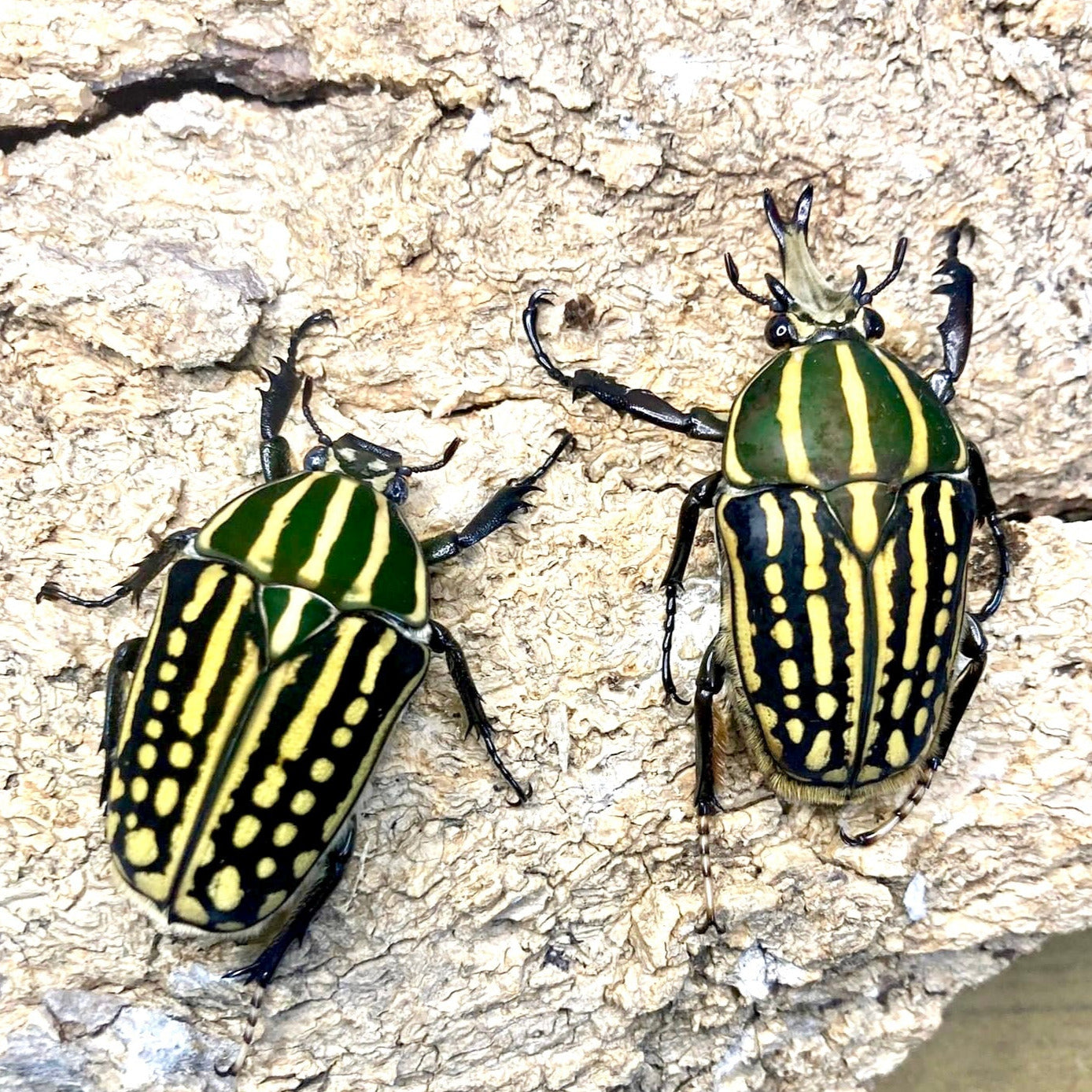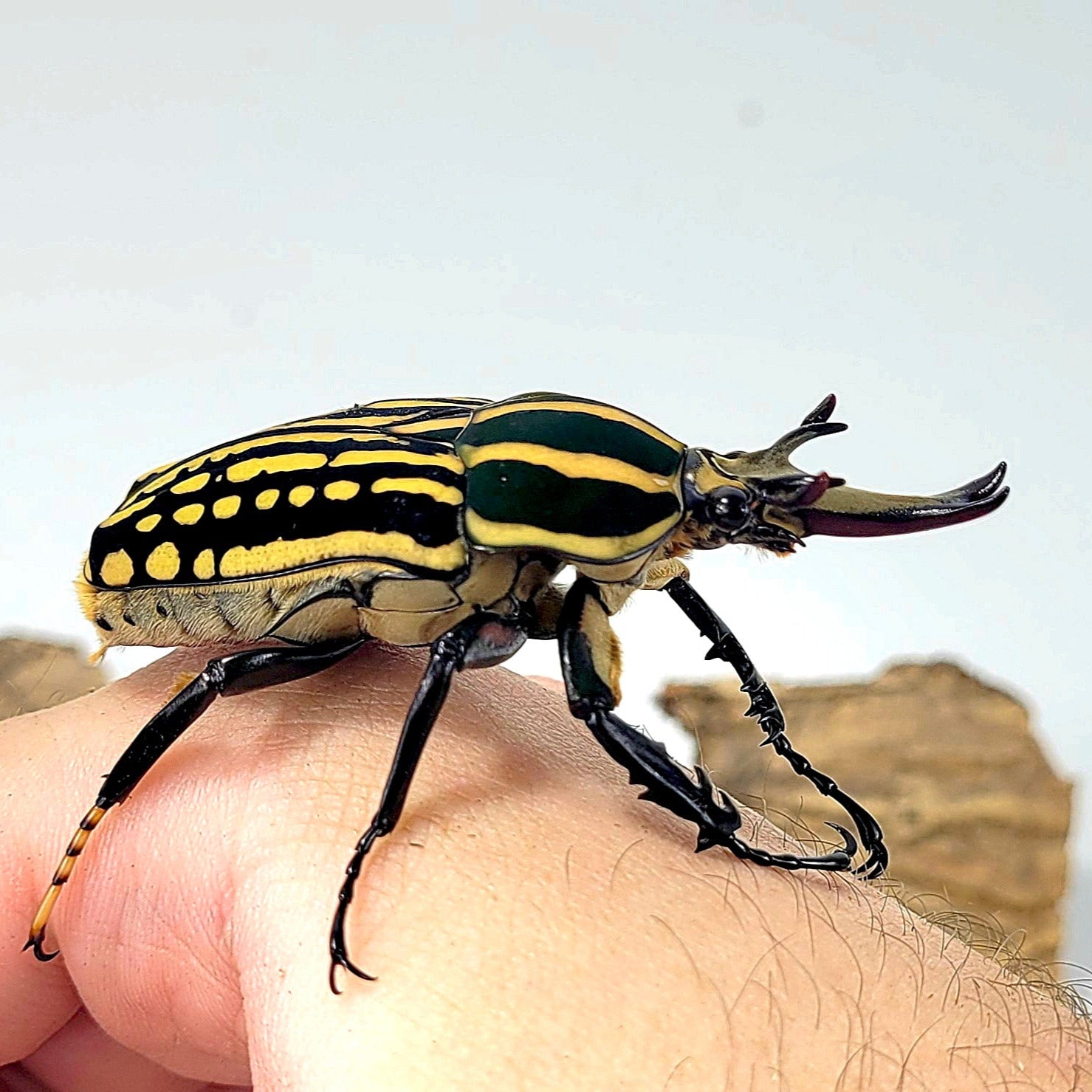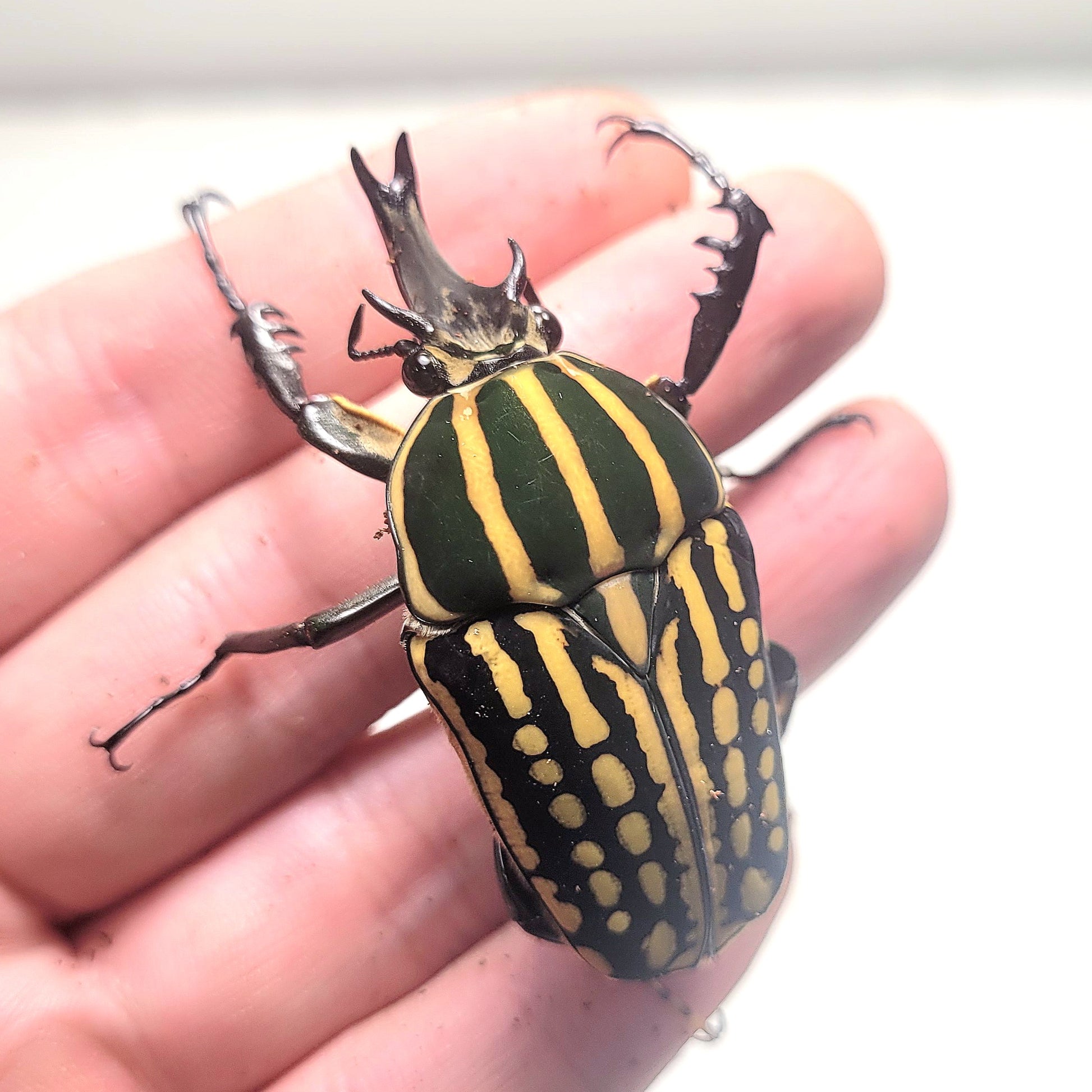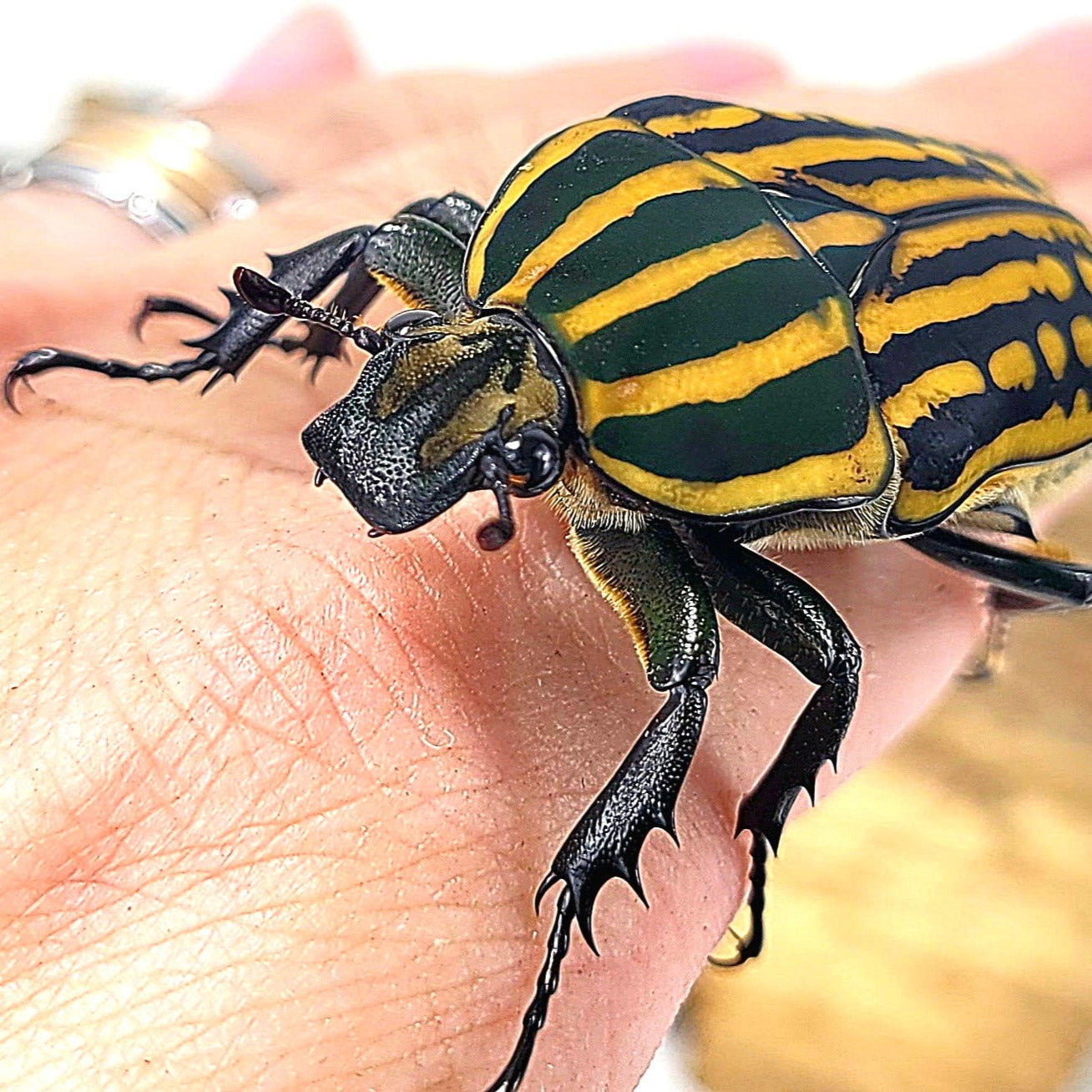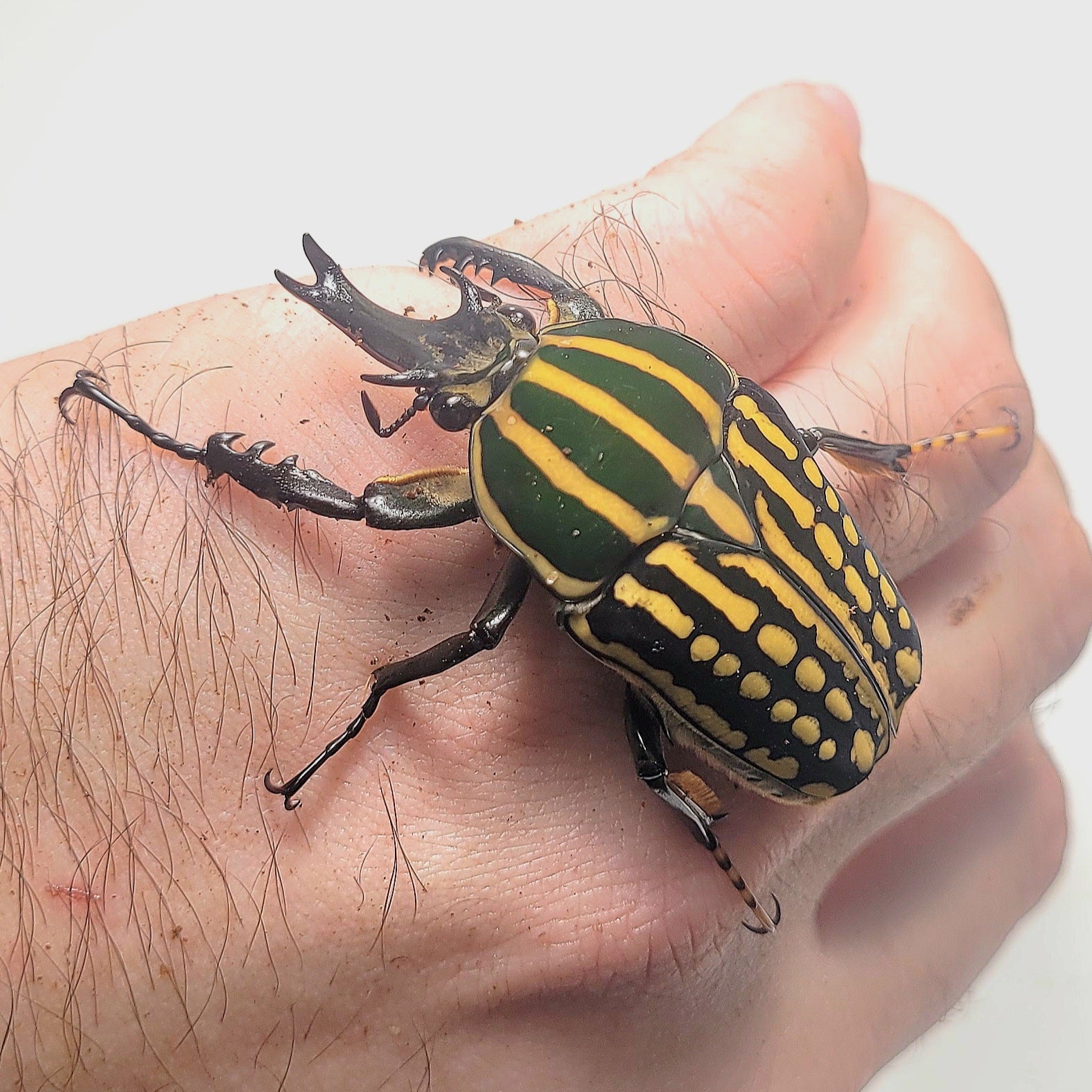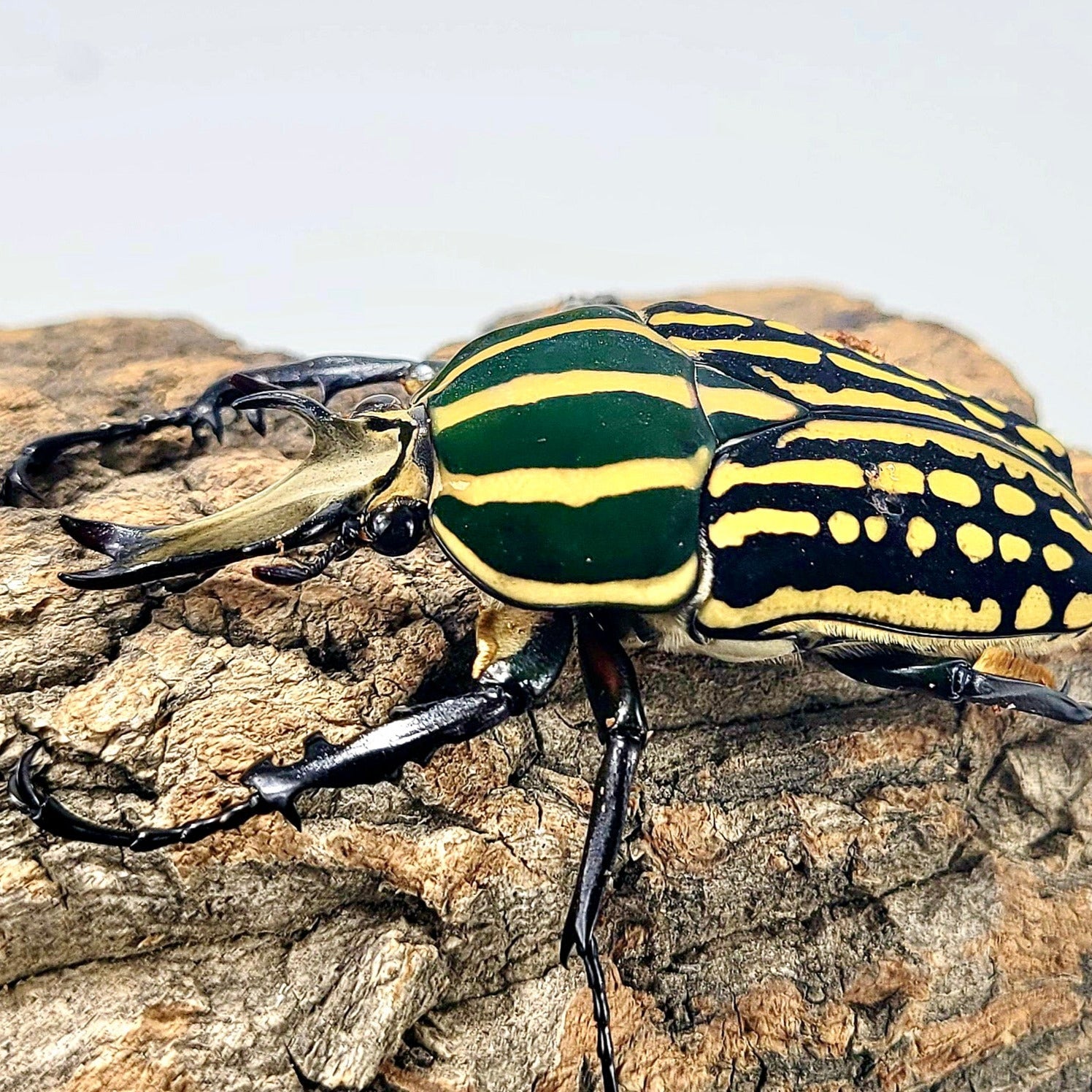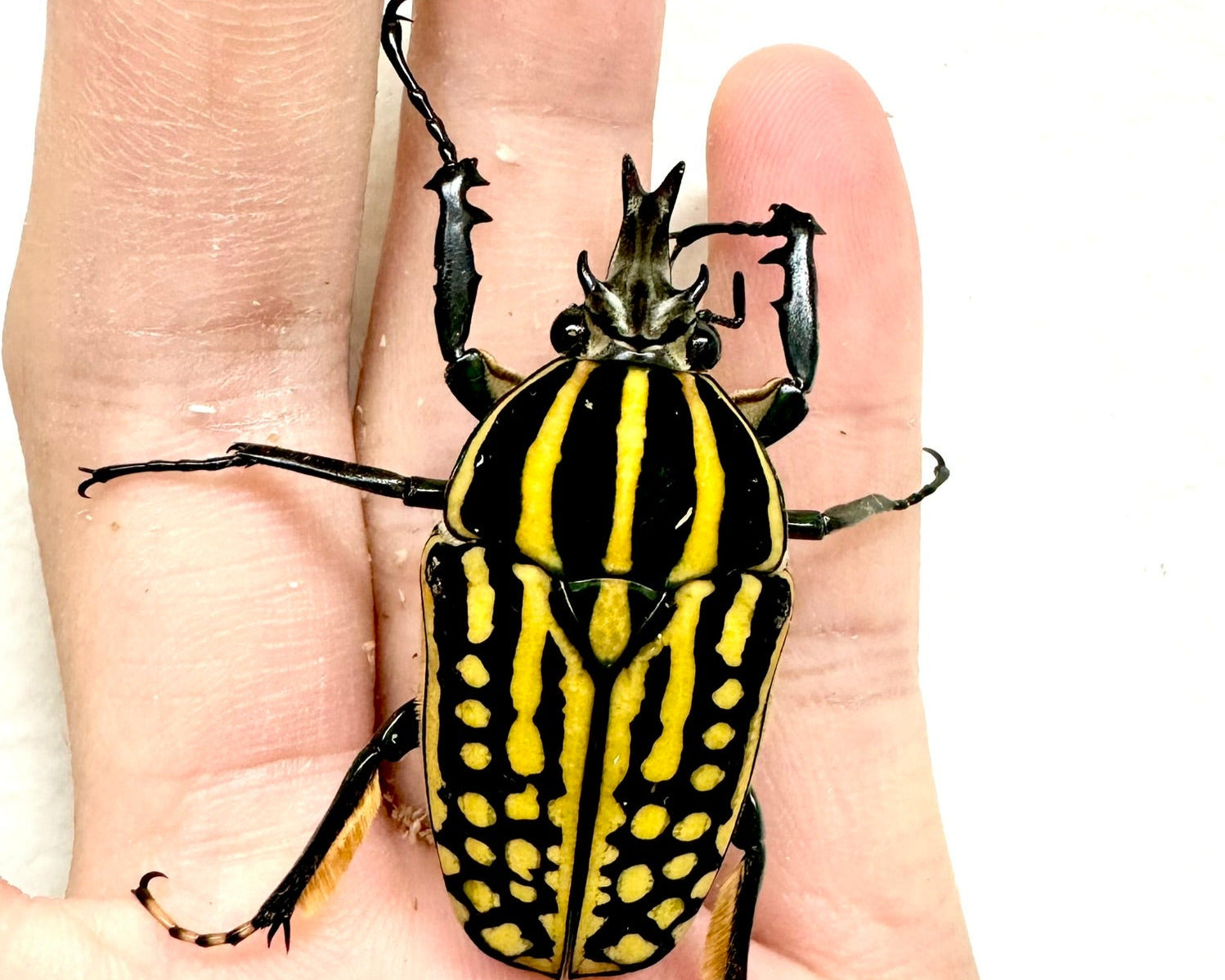James' Beetle Farm
Mecynorhina savagei
Mecynorhina savagei
Couldn't load pickup availability
Mecynorhina savagei, commonly known as the Savage Flower Beetle, is one of the most
spectacular and largest beetles in the Scarabaeidae family. Known for its impressive size and
striking appearance, this beetle is a favorite among beetle enthusiasts and collectors who
appreciate its vibrant colors and dynamic behavior.
The adult Savage Flower Beetle typically ranges from 35 to 70 millimeters in length, making them one of the larger flower beetles. Their exoskeleton is characterized by a vivid green base color, often accented with white, yellow, or orange patterns, depending on the individual. The metallic sheen of their exoskeleton gives them a shimmering appearance, especially under bright light. Males are distinguished by their prominent, forked horn on the head, which they use in battles for dominance, particularly during mating contests.
Native to the tropical rainforests of Central and West Africa, Mecynorhina savagei thrives in
warm, humid environments. In the wild, these beetles are primarily found in areas with abundant flowering plants and decaying fruit, which provide both food and breeding grounds. They are diurnal, meaning they are active during the day. They are known for their strong, buzzing flight as they move from tree to tree in search of food.
The diet of the Savage Flower Beetle is relatively easy to manage in captivity. Adults primarily feed on soft, sweet fruits such as bananas, mangoes, and peaches. They can also be provided with beetle jelly, a specially formulated food that is commonly used by beetle keepers to ensure proper nutrition. James Beetles sells their own beetle jelly as well, if you are interested please click here: Beetle Jelly.
The larvae require a substrate rich in decaying organic material, such as leaf
litter and rotten wood. Providing a well-balanced substrate with adequate moisture is crucial for their growth and development.
Breeding Mecynorhina savagei in captivity can be a rewarding challenge. The breeding process involves providing a deep substrate where females can lay their eggs. The larvae, which are large and robust, go through several developmental stages, or instars, over a period of several months. They eventually pupate within a chamber made of frass and substrate, emerging as adults after a few weeks. Successful breeding requires maintaining appropriate temperature and humidity levels, as well as ensuring the larvae have access to a nutrient-rich substrate.
The Savage Flower Beetle has a moderate lifespan, with adults living for several months under optimal conditions. Keeping them healthy requires a warm, humid environment that mimics their natural tropical habitat. Regular misting of the enclosure and maintaining a stable temperature will help to ensure their well-being. These beetles are relatively hardy but do best with consistent care and attention to their environmental needs.
Mecynorhina savagei is generally calm and can be handled with care, though their large size
and strength mean they should be handled gently. They are most active during the day, making them fascinating to observe as they feed and explore their environment. Their impressive size and vibrant colors make them a centerpiece in any beetle collection.
Mecynorhina savagei, the Savage Flower Beetle, is a spectacular and large beetle species that
captivates both novice and experienced beetle keepers. With its vibrant colors, impressive size, and relatively straightforward care requirements, it offers a rewarding experience for those interested in the world of exotic insects. While breeding can be challenging, the effort is well worth it for the opportunity to observe the full life cycle of this magnificent beetle. With the right care and environment, the Savage Flower Beetle can thrive and provide endless fascination for its keeper.
Share
